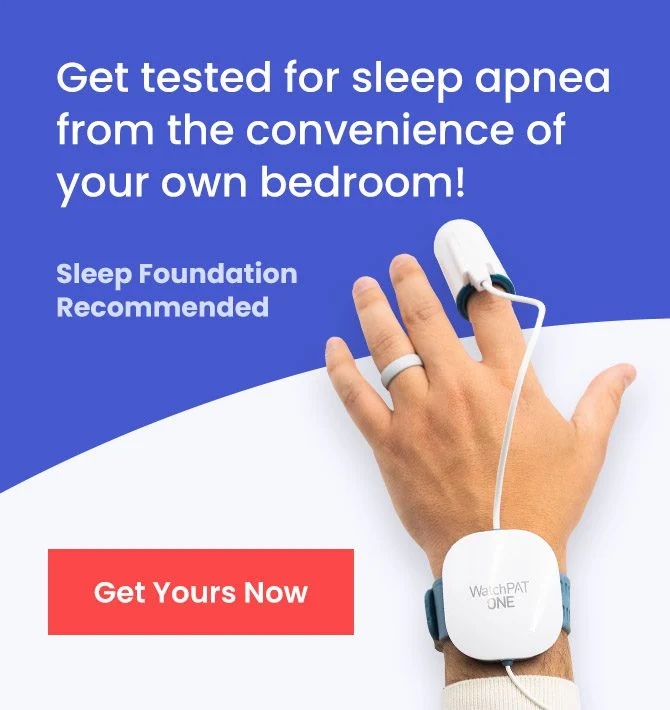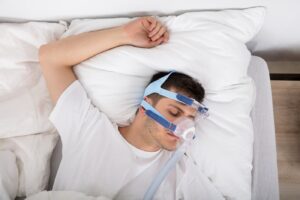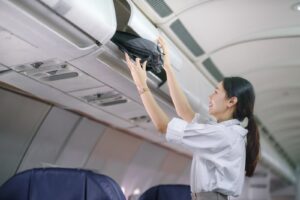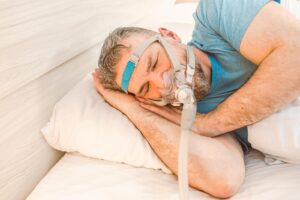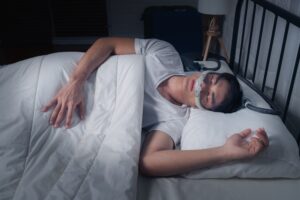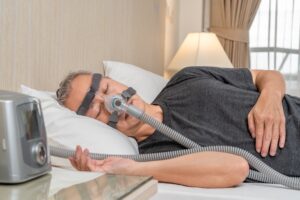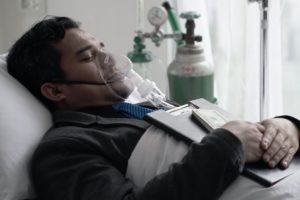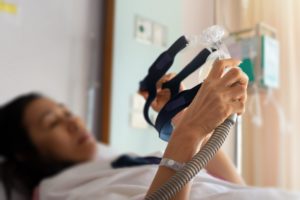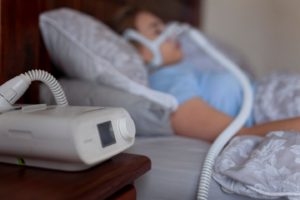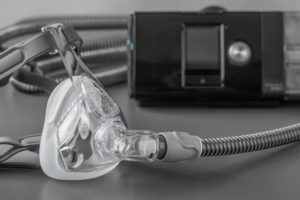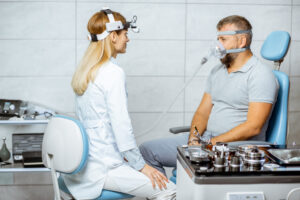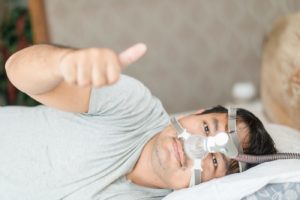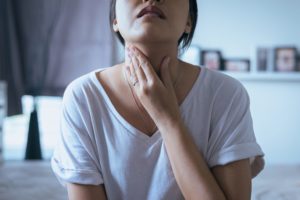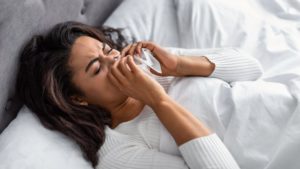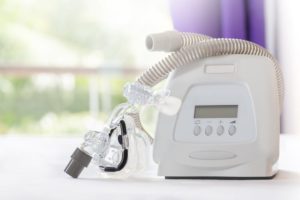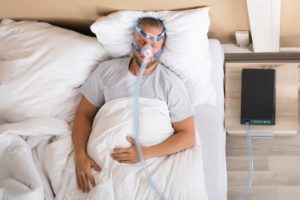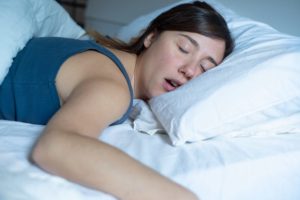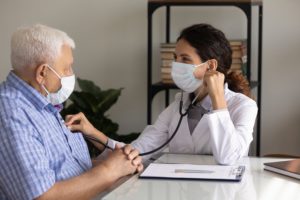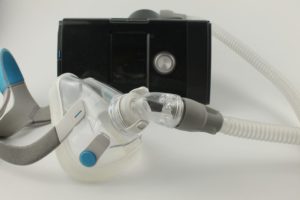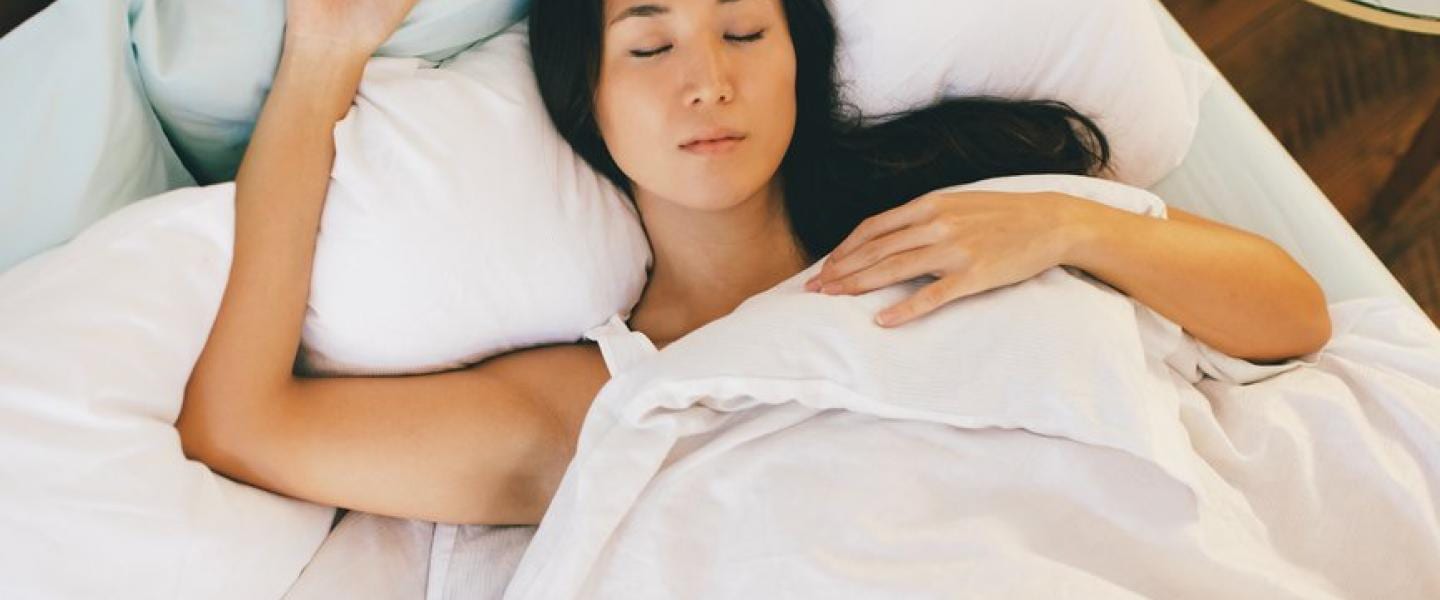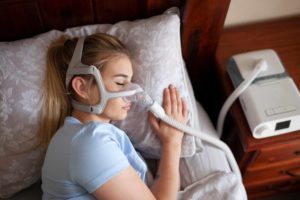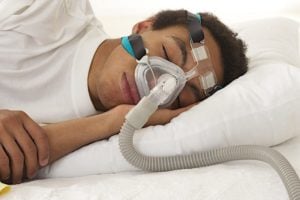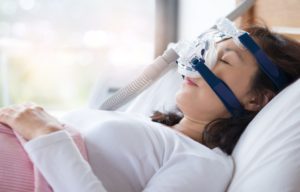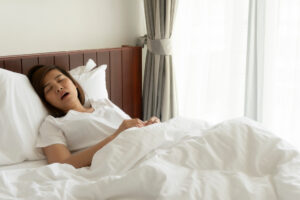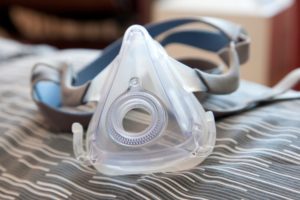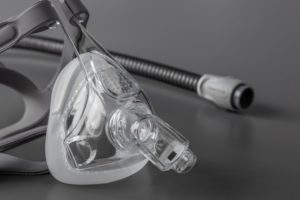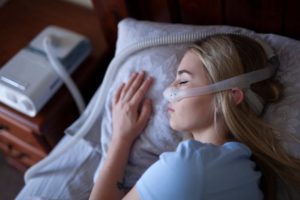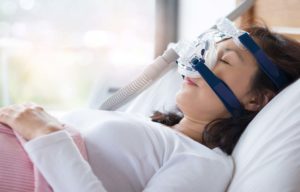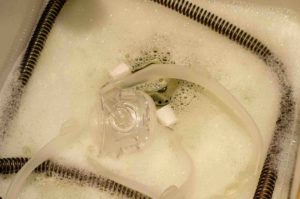When you buy through our links, we may earn a commission. Products or services may be offered by an affiliated entity. Learn more.
APAP Machines: A Guide to Treatment
- APAP machines treat sleep apnea by opening airways with continuous air pressure.
- While CPAP provides a fixed pressure, APAP adjusts the pressure automatically based on your breathing patterns.
- APAP devices have sensors to measure breathing resistance and varies airflow accordingly.
- Consult with a healthcare provider to determine if APAP is the right choice for your sleep apnea treatment.
Auto-adjusting positive airway pressure (APAP) machines are similar to continuous positive airway pressure (CPAP) machines. Both machines are designed to treat obstructive sleep apnea (OSA), a condition where the throat muscles relax during sleep and block the airway. Without treatment, the sleeper stops breathing repeatedly throughout the night, which can have harmful effects on their health .
Also known as an auto-CPAP, an APAP machine is a more advanced version of the CPAP that automatically adjusts the positive airflow according to each person’s needs. Because they adapt to the breathing patterns of each user, APAP machines are often an effective way to treat OSA symptoms with less disturbance.
To better understand the APAP device, we will examine its function, benefits, and how to avoid common issues. We’ll also explain how and where to purchase a machine.
What Is an APAP Machine?
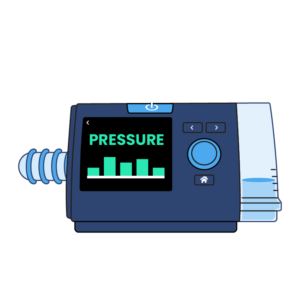

An APAP machine takes in air through a filter, then uses a motor to blow air of varying pressure levels through a tube into a mask. Similar to a CPAP machine, an APAP machine is designed to keep the user’s airway open while they sleep. However, it relies on a different method. Using advanced sensors, the APAP device detects respiratory events and increases the air pressure automatically. Once the sleeper’s breathing normalizes, the APAP machine lowers the air pressure back to the minimum necessary level.
Because of their design, APAP devices tend to be quieter and smaller than their CPAP counterparts. They may also be a preferable form of treatment for people with pressure intolerance.
What Is an APAP Machine Used For?
An APAP machine is used to treat sleep apnea, a condition characterized by shallow breathing or breathing that stops altogether during sleep.
Obstructive sleep apnea involves muscle relaxation in the throat that causes the airway to close, blocking inhalation. A variety of factors can contribute, including advancing age, higher body mass index (BMI), sex, head and neck anatomy, sleeping position, substance use, and underlying medical conditions.
Central sleep apnea (CSA) entails problems with how the brain communicates to the muscles responsible for breathing, which results in pauses . Age, sex, certain drugs , and ascending to high altitudes can elevate the risk of the condition.
APAP machines are designed to respond to breathing changes to prevent interruptions that could otherwise reduce sleep quality or pose a threat to the sleeper’s health.
How Does an APAP Machine Work?
APAP machines take in air through a filter, use a motor to push it through a hose, and deliver it to the sleeper via a mask. The mask may cover the sleeper’s nose, mouth, or both. Most users place the machine itself on a nightstand. With two pressure settings and complex algorithms, an APAP machine adapts to a person’s varying air pressure needs throughout the night.
An APAP machine is one of three major positive airway pressure (PAP) devices. A CPAP machine is the most common and uses a fixed air pressure that doesn’t fluctuate. The third type, a BiPAP machine, is a kind of ventilator that uses higher air pressure when the sleeper inhales and lower pressure when they exhale.
How Does an Auto-CPAP Machine Know When You Stop Breathing?
APAP machines have sensors that measure breathing resistance, and a computerized algorithm varies the airflow accordingly.
Device algorithms vary between manufacturers , and shoppers should consider their differences before purchasing. Some machines feature a more aggressive algorithm that stays at the treatment level longer before returning to the minimum level. Others raise air pressure more slowly and quickly decrease pressure after reaching the treatment level. This can be more comfortable for the sleeper, but it may be less effective in some sleep apnea cases.
Take Our Quiz to Know Your Sleep Apnea Risk
To understand if you could have sleep apnea, take our short quiz below to see if you exhibit any signs.
The Benefits of Using an APAP Machine
APAP machines are designed to work with a person’s natural breathing variations for restorative sleep. By using the lowest effective pressure, they limit the claustrophobic sensation that some CPAP users experience, especially with high-pressure settings. Because of their adaptability, APAP machines can also more easily accommodate changes in the user’s sleep position, health, and body weight.
People who use an APAP machine may experience less daytime fatigue due to undisturbed sleep. Continued use of an APAP machine can result in less anxiety as well as improved productivity and memory . People with allergies, intermittent apnea, or occasional colds may especially benefit from APAP machines since they adjust the pressure as needed. Many APAP machines also record critical data that a medical provider can use to monitor your condition.
Tips for Avoiding Common Issues With Auto-CPAP Devices
Although APAP machines are more flexible, they still present certain challenges, especially for new users. Some people have trouble finding a comfortable mask that fits securely. Others struggle to get used to wearing a mask or experience a dry throat the next morning. Even though it’s designed to improve your sleep, it may initially be difficult to fall asleep while using the machine.
There are several ways to make your sleep experience more comfortable for those who have sleep apnea. Sleepers can ease their way into regularly using an APAP machine by keeping the following in mind.
- CPAP Mask Compatibility: Masks come in a range of styles and sizes, including full face, nasal, and nasal pillow. Most masks are designed to work with any machine. You may need special connection equipment, but many masks come with any necessary adaptors. If you’re unsure what mask is right for you, your medical provider can share advice.
- Use a CPAP Humidifier: APAP users may experience a dry throat and mouth, a stuffy nose, chapped lips, and other symptoms of dryness. To combat this, some devices include an adjustable, heated humidifier. Controlling the humidity helps enhance comfort, which may make it easier to use your machine regularly.
- Get Used to Wearing a CPAP Mask: Before using the APAP machine at night, try wearing your mask for short stretches while awake. Practice putting on the mask and turning on the machine. After getting accustomed to the feel and sound, start using it during naps. When it comes time to use it at night, the transition should be much easier.
- Ensure Proper Fit: An ill-fitting mask can result in skin irritation, sores, and leaking air. Adjust the straps and headgear for a secure fit. Your doctor can assist and ensure that the mask is positioned properly. If your weight changes or you can’t find a comfortable fit, you may need a different size or style.
How to Know if You May Need an APAP Machine
If you suspect you’re experiencing symptoms of obstructive sleep apnea, you may want to talk to your doctor about APAP therapy. Obstructive sleep apnea is one of the leading causes of daytime sleepiness and affects 2% to 9% of adults, with men four times more likely to experience it than women. Common symptoms include snoring, waking up at night with a choking sensation, morning headaches, and daytime fatigue. Many people with OSA also wake up frequently throughout the night and experience restless sleep.
Discuss your symptoms with your doctor. They may recommend diagnostic tests, such as a sleep study, to assess your condition and determine whether an APAP machine is right for you.
Prescriptions, Insurance, and Buying APAP Devices
If you’re considering getting an APAP device, it’s important to know the potential cost and prerequisites. We will explore prescription requirements, insurance coverage, and where to shop for an APAP machine.
Do You Need a Prescription for an APAP Machine?
Because the FDA classifies it as a Class II medical device , you need a prescription to purchase an APAP machine. This allows you to discuss your symptoms and diagnosis with your doctor to ensure the most effective treatment. Retailers, including online vendors, require a copy of your prescription.
Does Your Health Insurance or Medicare Cover APAP Costs?
Medicare and many health insurance providers often cover CPAP machines and basic accessories. When getting an APAP machine for sleep apnea, however, some carriers may require that you first use a CPAP machine unless your doctor specifically cites why you need an APAP device. Insurance companies also typically require a completed sleep study in addition to a prescription.
When getting a machine from your insurance company, you must adhere to compliance requirements, which include proper usage and minimum hours of usage within a specified time frame.
How Much Does an Auto-CPAP Machine Cost?
APAP machines range in price from around $500 to $1,500. Devices with more advanced features, such as a heated humidifier, are on the higher end. Your out-of-pocket expense depends on your insurance coverage. If you have a high deductible, it may be more practical to pay for the device yourself. In this case, compliance regulations do not apply.
These prices don’t include masks, tubing, or accessories, which are sold separately. However, some retailers offer bundle deals that include the base unit and needed accessories.
Where Can You Buy an APAP Machine?
You can find APAP machines at brick-and-mortar medical equipment stores, online retailers, local sleep clinics, and insurance providers. Insurance providers often rent out the device in a rent-to-own arrangement.
When buying from a local store, you can inspect the machine before purchase, but there may be a limited selection. Online retailers typically offer a wider variety, lower prices, and a return policy in case the device doesn’t work for you. For shoppers buying a machine out of pocket, online retailers offer convenience and affordability provided you have a copy of your prescription.

Still have questions?
Our product experts have extensive experience testing just about every sleep product on the market. Send an email to [email protected] or call us at (877) 672-8966 with your questions and we’ll help you find exactly what you’re looking for.
References
10 Sources
-
Slowik, J. M., & Collen, J. F. (2022). Obstructive sleep apnea. In StatPearls. StatPearls Publishing.
https://pubmed.ncbi.nlm.nih.gov/29083619/ -
Perin, C., & Genta, P. R. (2021). Less may be more: CPAP vs. APAP in the treatment of obstructive sleep apnea. Jornal Brasileiro de Pneumologia, 47(6), Article e20210455.
https://pubmed.ncbi.nlm.nih.gov/34932732/ -
Ghadiri, M., & Grunstein, R. R. (2020). Clinical side effects of continuous positive airway pressure in patients with obstructive sleep apnoea. Respirology (Carlton, Vic.), 25(6), 593–602.
https://pubmed.ncbi.nlm.nih.gov/32212210/ -
MedlinePlus: National Library of Medicine (US). (2021, March 30). Sleep apnea.
https://medlineplus.gov/sleepapnea.html -
A.D.A.M. Medical Encyclopedia. (2021, July 12). Central sleep apnea. MedlinePlus.
https://medlineplus.gov/ency/article/003997.htm -
Badr, M. S. (2021, September 30). Central sleep apnea: Risk factors, clinical presentation, and diagnosis. In R. D. Chervin (Ed.). UpToDate.
https://www.uptodate.com/contents/central-sleep-apnea-risk-factors-clinical-presentation-and-diagnosis -
Burgess, K.R., Ainslie, P.N. (2016). Central Sleep Apnea at High Altitude. In: Roach, R., Hackett, P., Wagner, P. (eds) Hypoxia. Advances in Experimental Medicine and Biology, vol 903.
https://pubmed.ncbi.nlm.nih.gov/27343103/ -
Isetta, V., Navajas, D., Montserrat, J. M., & Farré, R. (2015). Comparative assessment of several automatic CPAP devices’ responses: A bench test study. ERJ Open Research, 1(1), 00031–02015.
https://pubmed.ncbi.nlm.nih.gov/27730142/ -
A.D.A.M. Medical Encyclopedia. (2023, April 20). Positive airway pressure treatment. MedlinePlus.
https://medlineplus.gov/ency/article/001916.htm -
American Academy of Sleep Medicine. (2018, October 19). FDA reclassifies positive airway pressure as a Class II medical device.
https://aasm.org/fda-reclassifies-positive-aiway-pressure-class-ii-medical-device/


